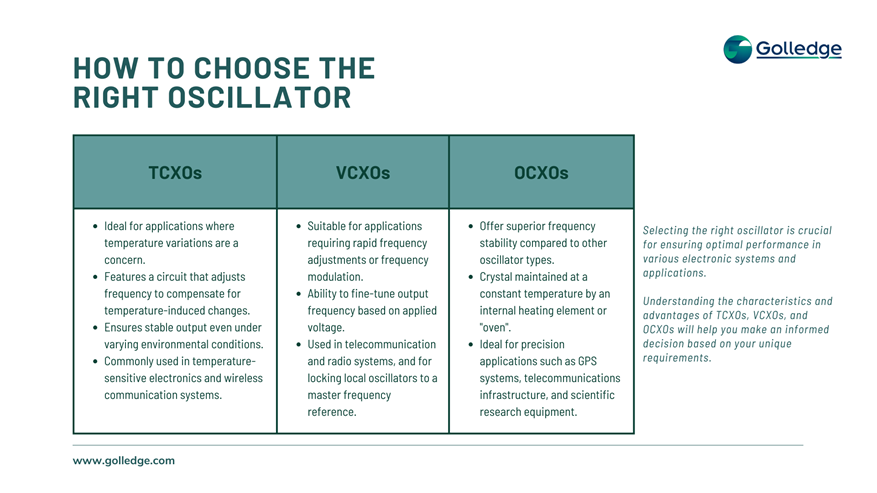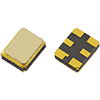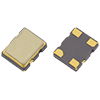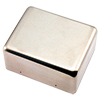TCXO vs OCXO: Choosing the Right Oscillator for Your Specific Application
26 Jul 2023
INSPIRE
In the rapidly evolving field of electronic components, frequency control products, such as oscillators and quartz crystals, play a pivotal role in defining the efficiency and reliability of electronic circuits.
These elements serve as the "heartbeat" of electronic systems, providing the timing and synchronisation that is essential to their operation.
Understanding the nuances of frequency control products can empower you to optimise your applications, whether you are an electronics enthusiast or a professional in the field. It’s important to know which frequency control products match best with your application or device.
The crux of this understanding lies in the domain of oscillators, specifically Crystal Oscillators (XOs), Temperature Compensated Crystal Oscillators (TCXOs) and Oven-Controlled Crystal Oscillators (OCXOs). These are among the most commonly used frequency control products in modern electronic circuits due to their exceptional precision and stability.
In the remainder of this blog, we will delve deeper into the role that oscillators play in electronic devices. We will also share valuable information to help you understand how to choose the perfect oscillator for your specific application.
Understanding oscillators
Oscillators form the cornerstone of electronic circuits, producing a continuous, rhythmic output signal without any external input. By generating a repeating waveform that usually has a constant amplitude and frequency, oscillators effectively set the tempo for the operation of many electronic systems.
The core functioning of an oscillator revolves around the principle of oscillation - a repetitive variation, typically in time, of some measure.
The oscillators harness this principle to create a periodic waveform, which can take many forms such as a sine wave, square wave, or a clipped triangle wave. This output signal is generated by a resonant device, often a quartz crystal , whose frequency of vibration is well-defined and consistent.
The generated frequencies are pivotal to the functioning of a multitude of electronic devices. For instance, in a radio, the oscillator creates an electromagnetic wave that can be modulated with information and broadcast.
In modern computers, it drives the processor's clock, which in turn controls the execution speed of operations. In a GPS receiver, oscillators provide the precision timing needed to receive signals from satellites. This ubiquitous nature of oscillators underscores their profound relevance in our tech-driven world.
Types of oscillators and their applications
To fully appreciate the versatility and importance of oscillators, we must delve into the detailed comparison of different types, specifically:
Crystal Oscillators (XOs)
XOs are the basic building block and can either be a self contained module or a crystal with external oscillator circuit, often part of a microcontroller. This is the cheapest option providing much better accuracy than none crystal controlled options but not as good as TCXOs or OCXOs.
Temperature Compensated Crystal Oscillators (TCXOs)
TCXOs are advanced frequency control products that balance the cost and low power of a standard crystal oscillator with the temperature stability approaching that of an OCXO.
A TCXO incorporates a temperature compensation circuit that corrects the natural tendency of the crystal to change frequency with temperature, ensuring a consistent output even across a wide temperature range.
This accuracy, combined with the TCXO's smaller size, lower power consumption, and cost-effectiveness, makes it ideal for various applications, including:
- GPS Receivers
- Wireless and Cellular Communications Equipment
- Portable Test and Measurement Equipment
- Scientific Instruments
- Aerospace and Defence Systems
Oven-Controlled Crystal Oscillators (OCXOs)
On the other hand, OCXOs represent superior precision in frequency control.
An OCXO maintains a constant temperature for the crystal oscillator within an 'oven,' which allows for minimal frequency variation, even when environmental temperatures fluctuate.
Although OCXOs are typically larger, more power-hungry, and more expensive than TCXOs, their superior frequency stability and accuracy make them invaluable in high-performance applications, including:
- Telecommunications: OCXOs ensure clock synchronisation and RF signal stability across networks, retaining system timing even in the absence of GPS-derived timing signals.
- Instrumentation: Laboratory and test equipment, such as signal generators and frequency counters, utilize OCXOs for accurate and stable frequency references.
- Broadcasting: For accurate timing and synchronisation of audio and video signals, broadcast equipment relies on OCXOs.
- Computing: High-performance computing systems, including supercomputers and servers, use OCXOs for precise timing and synchronisation of system events.
Understanding the differences between TCXO, XO, and OCXO, along with their specific applications, is crucial when choosing the right oscillator for your needs. This knowledge will enable you to optimise your applications for performance, reliability, and cost-effectiveness.
Other type of oscillators
Another type of oscillator is Voltage-Controlled Crystal Oscillators (VCXOs). They are frequency control devices that offer precise frequency tuning capabilities through the application of a varying voltage.
Unlike TCXOs and OCXOs, which rely on temperature compensation or stabilisation techniques for frequency stability, VCXOs provide frequency tuning over a narrow range typically centered around a nominal frequency.
VCXOs find applications in a wide range of precision timing and frequency control applications where precise frequency adjustments are required. Some common applications of VCXOs include telecommunications, data communication systems, frequency synthesizers, phase-locked loops (PLLs), test and measurement equipment, and radar systems.
What is the difference between TCXO and VCXO?
One of the primary differences between VCXO and TCXO lies in their frequency stability and tuning capabilities. While TCXO offers excellent frequency stability over a wide temperature range, VCXO provides frequency tuning capabilities that allow for precise adjustments to the output frequency. VCXO typically have a lower frequency stability compared to TCXOs but offer greater flexibility in frequency tuning, making them suitable for applications where precise frequency adjustments are required.
Another distinguishing factor is their power consumption and size. VCXO generally consume less power and have smaller footprints compared to TCXO, making them suitable for space-constrained applications where power efficiency and size are critical considerations.
Choosing the right TCXO or OCXO for your application

Selecting the ideal oscillator for your specific application requires a thoughtful balance of several factors, including size, power consumption, cost, accuracy, and temperature range.
Understanding these factors will empower you to choose an oscillator that perfectly aligns with your needs.
Let us go into further detail about the importance of each of these factors:
Oscillator Size
Size often matters in electronics design, especially in compact or portable devices.
Here, XOs and TCXOs hold a significant advantage. The design of TCXOs and XOs are generally smaller than OCXOs, allowing for integration into space-constrained applications.
Oscillator Power consumption
Power consumption is another critical factor. In battery-powered devices or energy-conscious applications, it's crucial to opt for an oscillator that maintains a low power profile.
Again, XOs and TCXOs outshine OCXOs in this aspect, consuming less power while still delivering impressive frequency stability.
Cost of the Oscillator
Cost can also be a deciding factor, particularly in budget-sensitive projects.
Crystals offer the cheapest solution, closely followed by XOs and then TCXOs, delivering a balance of performance and affordability.
Accuracy
Accuracy is, of course, a fundamental consideration when choosing an oscillator.
If your application requires uncompromised frequency stability and precision, the OCXO becomes the prime candidate. Despite its larger size, higher power consumption, and cost, an OCXO's superior accuracy makes it the best choice for applications demanding high precision.
Phase Noise
Golledge XO modules can provide an excellent low phase noise and low jitter clock source at low cost. Our OCXOs use crystals with higher Q than normal XOs and TCXOs and therefore provide the best phase noise performance.
Temperature range
Finally, the oscillator's temperature range can be crucial, particularly in applications exposed to significant temperature variations.
Both TCXOs and OCXOs shine in this regard, with in-built temperature compensation mechanisms to maintain frequency stability over a broad temperature range.
Why Golledge Electronics should be your go-to solution for oscillators
When it comes to procuring high-quality frequency control products, Golledge Electronics should be your provider of choice.
Offering a wide-ranging portfolio, including quartz crystals oscillators, crystal filters , and saw filters , Golledge Electronics caters to a diverse array of applications and requirements.
But where Golledge Electronics truly shines is in our offering of high-quality TCXOs and OCXOs.
Our TCXOs stand out for their unique blend of compact size, low power consumption, and impressive level of temperature stability, making them a perfect choice for various applications. On the other hand, our OCXOs are renowned for their exceptional frequency stability, unparalleled in applications that require the highest levels of precision and superior phase noise
With a robust commitment to quality and compliance and the goal of always exceeding our customers’ requirements, Golledge is proud to have cultivated a reputation for providing top-tier products backed by excellent customer service.
Our technical experts are always on hand to provide guidance and advice, helping you select the perfect frequency control product for your specific application.
For more information on OCXOs, TCXOs, and other frequency control products, do not hesitate to reach out to our team of experts. We will be happy to help your project achieve the success it deserves.




